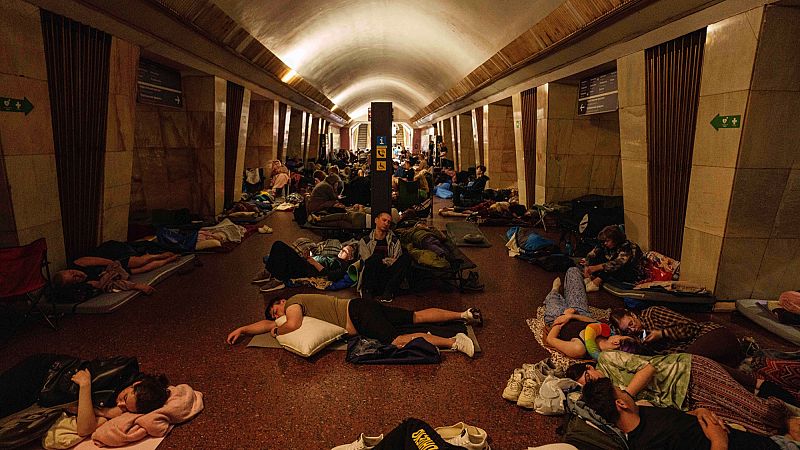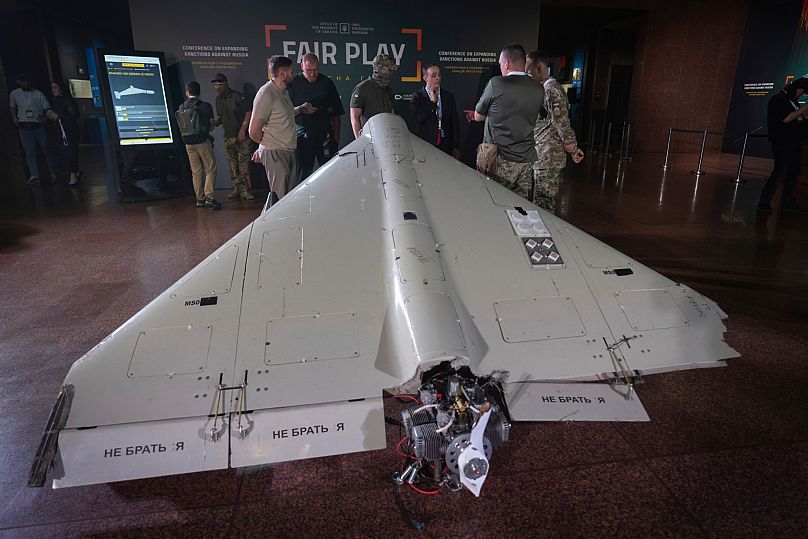
In the first 10 days of July, Russia launched a total of 2,516 Shahed-type drones and decoys at Ukraine, attacking the country every single night — a number clearly indicating Moscow’s strategy and its intentions not to scale down its attacks.
In the entire month of June, Russia launched fewer drones at Ukraine — 2,453 — than it did over the past 10 days.
During the latest attack, Russian forces launched 397 drones against Ukraine overnight on Thursday.
On Wednesday evening, Ukraine’s Air Force issued multiple alerts warning that swarms of Russian drones were targeting Ukraine’s regions, with most of them specifically directed at Kyiv.
Almost half of the Russian-launched Shahed-type kamikaze drones turned out to be decoys. Moscow has been increasingly using them to overwhelm Ukrainian air defences for maximum damage and casualties.
Moscow’s attacks usually start with several waves of drones, followed by cruise and ballistic missiles.
Following this playbook, Moscow fired eight Iskander-M ballistic missiles, six Kh-101 cruise missiles, and four S-300 guided air defence missiles overnight on Thursday, targeting primarily Ukraine’s capital.
As Ukraine is struggling to get more air defence, it is notable that the air defence forces shot down all eight ballistic missiles directed at Kyiv.
During the Wednesday overnight Russian attack, which targeted the western city of Lutsk, six Kinzhal missiles managed to bypass Ukraine’s air defences amid a shortage of US-supplied Patriot systems and relevant interceptor missiles.
"This is a clear escalation of terror by Russia — hundreds of 'Shaheds' every night, constant strikes, and massive attacks on Ukrainian cities," Ukrainian President Volodymyr Zelenskyy said on X.
Ukraine was hit with the highest number of civilian casualties over a single month in June, when 232 people were killed and 1,343 injured, the United Nations figures show.

On Thursday, Ukraine’s president arrived at the two-day Ukraine Recovery Conference (URC) in Rome.
This conference marks the fourth major international event focused on mobilising political and private-sector support for Ukraine's reconstruction.
The URC 2025 is organised jointly by the governments of Ukraine and Italy, with the participation of the European Commission, international financial institutions, business leaders, civil society, and local authorities.
The conference's primary goal is to mobilise political, financial and technical support for Ukraine, focusing on attracting private investment, strengthening human capital, rebuilding communities and regions and advancing reforms for European integration.
But the main focus is expected to be on Russia’s intensified aerial attacks as Moscow is targeting civilian infrastructure and residential sites.
"Today, I will be speaking with partners — in particular within the Coalition of the Willing — about additional funding for the production of interceptor drones and the supply of air defense systems for Ukraine," Zelenskyy said.
Ukrainian Foreign Minister Andrii Sybiha earlier announced that on Thursday, Zelenskyy is scheduled to hold further talks in the Italian capital with Washington officials to discuss sanctions policy and the imminent adoption of a new US sanctions package against Russia.
Zelenskyy already met with US Special Envoy for Ukraine Keith Kellogg in Italy.
Ukraine’s president has also already spoken with Pope Leo XIV, who reiterated his willingness to host both Russian and Ukrainian representatives for negotiations at the Vatican.
The Kremlin previously dismissed the Vatican as a potential venue for the talks.
However, as the two rounds of negotiations in Istanbul did not yield any tangible results, apart from the humanitarian aspect, Kyiv may attempt to relocate the process elsewhere.
The third round of talks between Russia and Ukraine was expected by the end of June, but the meeting has not been agreed upon.







